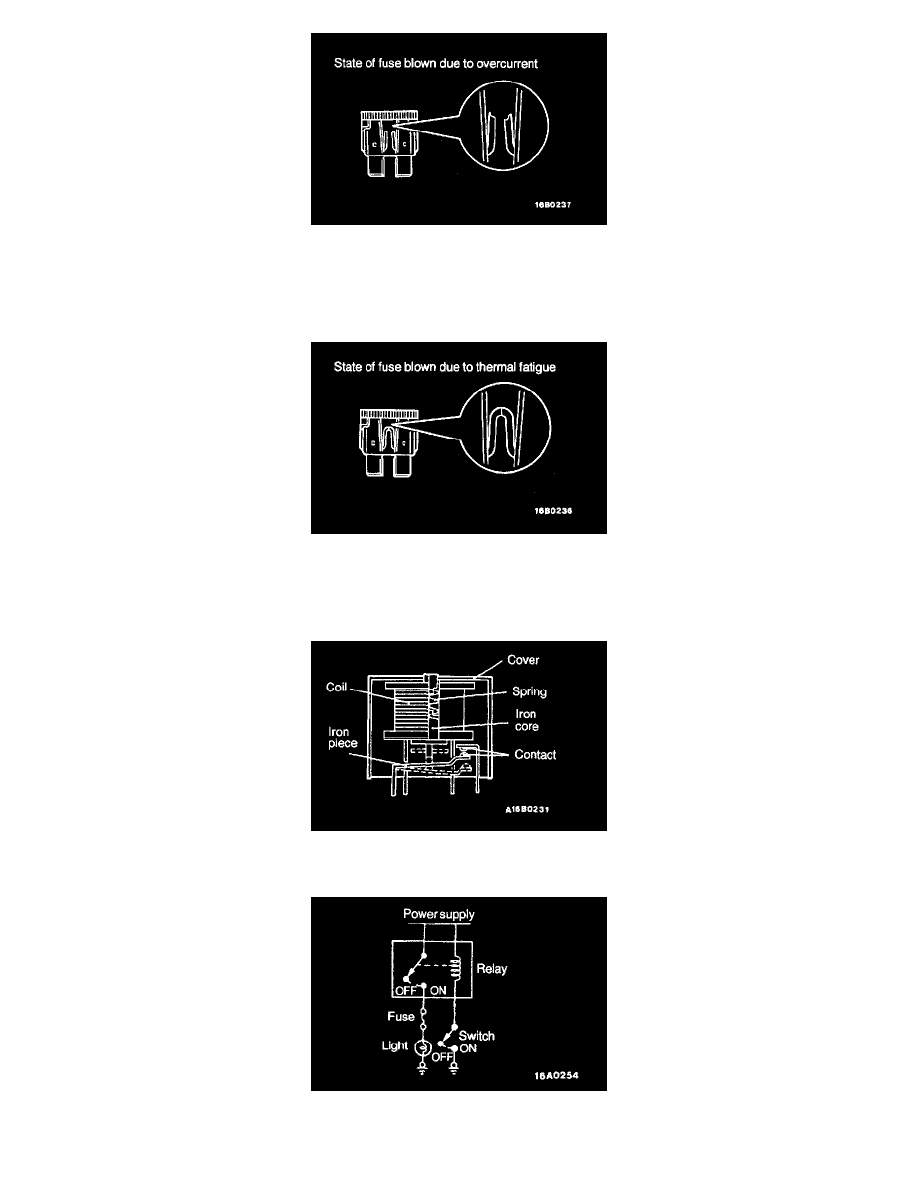Summit Wagon AWD L4-1795cc 1.8L SOHC (1994)

1. Fuse blown due to current exceeding rating The illustration shows the state of a fuse blown due to this cause. In this case, do not replace the fuse
with a new one hastily since a current heavy enough to blow the fuse has flowed through it. First, check the circuit for shorting and check for
abnormal electric parts. After correcting shorts or replacing parts, the use only a fuse of the same capacity should be used as a replacement. Never
use a fuse of larger capacity than the one that has blown. If such a fuse is used, electric parts or wirings could be damaged before the fuse blows in
the event an overcurrent occurs again.
2. Fuse blown due to repeated turning current on and off The illustration shows the state of a fuse blown due to repeated current on/off. Normally,
this type of problem occurs after a fairly long period of use and is less frequent than above. In this case, simply replace with a new fuse of the same
capacity.
Relay Testing
1. When current flows through the coil of a relay, its core is magnetized to attract the iron piece, closing (ON) the contact at the tip of the iron piece.
When the coil current is turned off, the iron piece returns to its original position by a spring, opening the contact (OFF).
2. By using a relay, a heavy current can be turned on and off by a switch using much less current. For example, in the circuit shown here, when the
switch is turned on (closed), current flows to the coil of the relay. Then, its contact is turned on (closed) and the light comes on. The current
